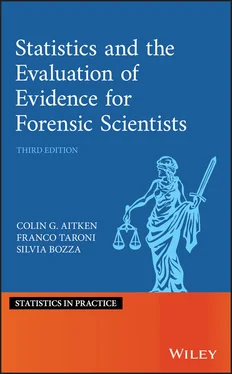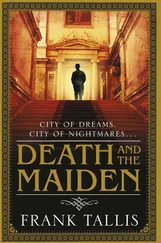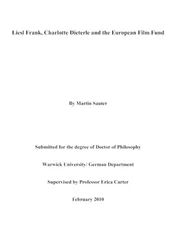J. B. Kadane
December 2019
In the Preface to the second edition of this book reference was made to the comment in the first edition that the role of statistics in forensic science was continuing to increase and that this was partly because of the debate continuing over DNA profiling that looked as if it would carry on into the foreseeable future. In 2004, the time of the second edition, we wrote that ‘it now appears that the increase is continuing and perhaps at a greater rate than in 1995’ (the time of the first edition). In 2020, we are confident that the increase is still continuing and the need for a third edition is pressing.
With the increase in the availability of data and of computing power, the role of statistical and probabilistic reasoning in the interpretation and evaluation of evidence is even more important than it was at the time of the second edition. The courts are increasingly aware of the importance of the proper assessment of evidence in which there is random variation. Various general publications testify to the need for a new edition of this book.
Four reports published by the Royal Statistical Society on the topic of Communicating and Interpreting Statistical Evidence in the Administration of Criminal Justice (2010–2014) available from https://rss.org.uk/news-publication/publications/our-research/.
Expert Evidence in Criminal Proceedings in England and Wales. The Law Commission of England and Wales, 2011, available from https://s3-eu-west-2.amazonaws.com/lawcom-prod-storage-11jsxou24uy7q/uploads/2015/03/lc325_Expert_Evidence:Report.pdf
A National Academy of Sciences report Strengthening Forensic Science in the United States: A Path Forward (Committee on Identifying the Needs of the Forensic Sciences Community; Committee on Applied and Theoretical Statistics, National Research Council, 2009); available from https://www.ncjrs.gov/pdffiles1/nij/grants/228091.pdf.
European Network for Forensic Science Institutes Guideline for Evaluative Reporting in Forensic Science, 2015; available from http://enfsi.eu/wp-content/uploads/2016/09/m1_guideline.pdf.
The President's Council of Advisors on Science and Technology Report on Forensic Science in Criminal Courts: ensuring Scientific Validity of Feature‐Comparison Methods, 2016; available from https://obamawhitehouse.archives.gov/sites/default/files/microsites/ostp/PCAST/pcast_forensic_science:report_final.pdf.
Statistics and probability for advocates: understanding the use of statistical evidence in courts and tribunals; a report by the Inns of Court College of Advocacy and the Royal Statistical Society in 2017, available from https://rss.org.uk/news-publication/publications/our-research/.
In addition there have been two major international research programmes within the last few years. First, there was a programme on Statistics and Applied Mathematics in Forensic Science at the Statistics and Applied Mathematical Sciences Institute in North Carolina from August 2015 to May 2016; https://www.samsi.info/news-and-media/2015-16-program-on-statistics-and-applied-mathematics-in-forensic-science-forensics/. Second, there was a programme on Probability and Statistics in Forensic Science at the Isaac Newton Institute of the University of Cambridge from July to December 2016; http://www.newton.ac.uk/event/fos. There is also a Centre for Statistics and Applications in Forensic Evidence ( https://forensicstats.org/), a research programme of a consortium of universities in the US which in their mission statement states that it ‘brings together scientists, statisticians, forensic practitioners, and other stakeholders to pursue the common goal of building strong statistical foundations to apply to forensic science’. The Royal Statistical Society has established a section on statistics and the law with a remit to ‘improve understanding and use of statistics in the administration of justice’ ( https://rss.org.uk/membership/rss-groups-and-committees/sections/statistics-law/). Since 2009, the University of Lausanne (www.formation-continue-unil-epfl.ch/formation/statistics-evaluation-forensic-evidence-cas) has provided extensive on‐line (e‐learning) courses to train forensic practitioners in the most up to date approaches to the evaluation and interpretation of scientific evidence. The aforementioned publications and activities show the increasing interaction of law, statistics, and forensic science to try and implement societal changes in the way evidence is evaluated and interpreted.
The book is a collaboration of two statisticians and a forensic scientist. It aims to cover all material relating to an understanding of the interpretation and evaluation of evidence for trace evidence, excluding DNA evidence for which there are many specialist books. Pattern evidence and digital evidence are not covered. There are occasional mentions of fingerprint and shoeprint evidence but not in detail. The presentation is at a level that assumes only a modest mathematical and statistical background. It will help if the reader is comfortable with mathematical notation but it will be possible to skim over the more technical parts without losing the importance of the interpretative and evaluative message. Appendices, including a detailed list of notation, will help with understanding. The ideas are illustrated with real and contemporaneous examples and data. Over 50 court cases are mentioned. There is coverage of the entire chain of reasoning with evidence from pre‐assessment to presentation in court. In addition, there is consideration of measures of performance of methods of evaluation for determination of the suitability of a method for use in a particular case. The book incorporates into one volume, ideas previously discussed in separate books by the authors such as those on Bayesian networks and on Bayesian data analysis from a decision theoretic point of view. There is a comprehensive and extensive bibliography.
There has been a considerable restructuring of the book since the second edition. There has also been the introduction of new material on decision making and performance assessment. In addition, material on Bayesian networks have been introduced as part of general discussions as appropriate rather than as a separate chapter, as was the case in the second edition.
Chapter 1on uncertainty has been expanded to include material on subjective probabilities and exchangeability. Chapter 2on variation from the second edition has been moved to an Appendix A. This Appendix A provides source material on probability distributions for ease of reference throughout the book. Illustrative material from the second edition has been distributed throughout the main body of the book. A few new distributions, inverse gamma, inverse chi‐squared, Wishart, and inverse Wishart, have been included to cater for additional Bayesian material, with particular reference to the necessity to deal with unknown variability in univariate and multivariate Normal distributions.
The chapter on evaluation of evidence ( Chapter 3in the second edition, now Chapter 2) has been considerably increased to allow for more detailed discussion of the possible errors in interpretation and the introduction of a section on coherent decision making. The historical chapter, now Chapter 3, is little changed from the second edition; this edition is concerned with recent developments. Chapter 4covers the Bayesian inference and incorporates material from Chapters 5 and 6 in the second edition with additional material on decision analysis and Bayesian networks.
It is with the following chapters that the greatest changes have been made. In the second edition, eighty pages were allowed for interpretation and the discussion of transfer evidence. This material is expanded to about 300 pages divided over two chapters entitled ‘Evidence and propositions’ and subdivided into theory ( Chapter 5) and practice ( Chapter 6). Bayesian networks are incorporated into these chapters. The material of Chapter 14 of the second edition is dispersed throughout the book.
Читать дальше












